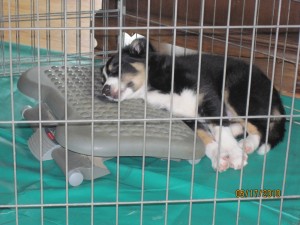It seems trite to remind my blog readers that agility is supposed to be fun. Every judge’s briefing warns us about taking this activity too seriously. ”Remember that your dog didn’t complete the entries, didn’t drive you here, and isn’t forcing you to do this.”
Occasionally, however, we DO need to be reminded that our goals and tunnel-vision should enhance our enjoyment, our sense of fun, rather than spoil our enjoyment of dog agility.
My advice to our students is to keep agility in proper perspective, and to establish a few essential rituals which may influence our enjoyment of a dog agility day.
Perspective
Regardless of the sport, dog lovers around the world step to the line with obvious tension, focus, even anxiety at times. If we truly see this as a game we play with our dogs and friends, our perspective can put agility in its place.
If you have a double-Q, a move-up title, or a major title, on the line it’s easy to fall into the trap of placing unreasonable importance on the activity. If, however, we maintain the focus we would give a hearty game of Frisbee on the beach (for example) we have a more realistic view of dog agility as an activity. If you missed a tossed Frisbee on the beach would you be angry? Would you be frustrated? Would you be irritated with your partner? Of course you would not. You would laugh it off and resolve to fix your errors in the next toss.
Essential Rituals
To change an attitude, change a habit. To change a habit, change behavior. To change behavior, establish new rituals. I’ve found the following rituals effectively altered my attitude towards dog agility trialing.
First, at the entry gate and start line, I focus all my love and smiles on my dog. I tell her how much I love her, and that we’re about to go have some fun!
Second, as she is working her way through the course, I liberally heap praise on her performance. I can smile and laugh while we’re running. One happy “Good Girl!” goes a long way toward bolstering my dog’s sense of enjoyment and confidence.
Third, as we finish, whether we’ve Q-d or not, whether we’ve achieved my personal goals, I tell her she was brilliant and “wasn’t that FUN?!?” The praise and laughter continue out of the ring, as she gets her reward, and as we proceed to our crating area.
I practice these rituals in my class time. If I find myself getting frustrated or cranky during practice, or during class, I discontinue the session and return to the lesson when my attitude has improved.
We create the performance our dog gives us. Why not create a FUN performance.
For more blogs on FUN! in dog agility, check out <https://dogagilityblogevents.wordpress.com/fun/>


